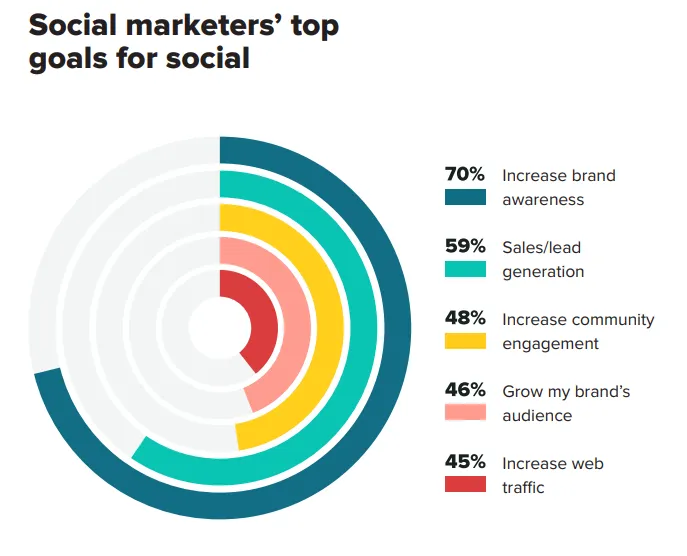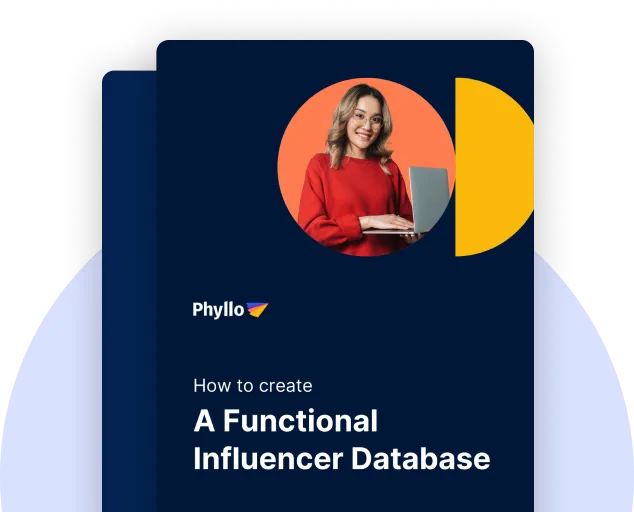With more than 4.95 billion users worldwide that accounts for over 61.4% of the global population, social media is one of the most effective marketing channels for businesses to connect with potential customers and drive sales and revenue.

However, running a business can be overwhelming and establishing a strong presence on every social media platform out there can very well seem… impossible. Thus, it is super important to zero in on a few select platforms where your target audience typically hangs out, so that you can focus your marketing efforts and reap the best returns on your investments. But how do you choose the right social media platform for your brand?
In this blog, we will walk you through the most important considerations for selecting the best social media platform for your brand.
6 Key Steps To Choose the Right Social Media Platform for Your Brand
Here are the typical considerations you must keep in mind while choosing the right social media platform for your brand.
Know Your Audience
Determining the identity of your ideal audience is the first step to choosing which platform you want to leverage to grow your brand’s online presence.
Different audience demographics tend to hang out on different social media platforms, which makes it imperative for your brand to know its ideal customer persona (ICP) so that you can target potential customers who will actually buy from you.
For instance, 29.9% of Facebook users fall within the age range of 25-34 while 38.6% of Snapchat users are typically aged between 18-24. Research also indicates that social media users spend more time on video platforms like TikTok (53.8 minutes) as compared to text-based platforms like X or formerly Twitter (34.1 minutes).

Besides this, 53% of LinkedIn users come from high-income households, so if you are planning to run ads for your products or services, LinkedIn can provide you with the best qualified leads. Last but not least, out of the 498 million monthly active Pinterest users, 76.2% are female, making it the platform of choice for beauty and home decor brands.

So, what do you think? Isn’t such information essential for crafting your brand’s messaging and targeting the right prospects with your sales offerings or not? Of course, it is!
Besides demographics, we also recommend you focus on psychographic attributes of your ideal audience, such as lifestyles, interests, online browsing behaviors and more. In this stage, you must be as detailed as you can, since granular insights will help you make a more informed choice.
Define Your Goals
Once you have identified your audience, it is paramount to set clear goals for engagement. While generating leads may be primary, social media can also enhance brand recognition, build trust, and enable brands to offer stellar customer service.
In fact, studies show that 55% of consumers aged 18-34 years express their appreciation of their favorite brands through social media.
For example, Starbucks effectively uses Twitter to maintain a friendly vibe, quickly responding to customer interactions to show value and build relationships.

Here is an illustration of the top goals that social media marketers aim to attain with their online presence on their social media platform of choice.

Once you define your marketing objectives, write them down for reference as you explore different platform choices. You should also brainstorm a list of both usual and atypical ways social media can work to elevate your brand’s digital presence.
Assess Platform Features and Capabilities
“If your target audience loves video, you can’t very well capture their attention with text-based social media posts. Assessing the innate capabilities of the social media platform you choose can have a big impact on your brand’s growing digital presence,” says Vineet Gupta, Founder of 2xSaS.
Assessing platform features and capabilities is crucial as it ensures the platform aligns with your business goals and audience needs. Different platforms offer unique tools, such as advanced analytics, advertising options, best text to speech functionalities, or multimedia support, that can enhance your marketing strategy.
For example, Instagram offers excellent visual content capabilities with its Stories and Reels and with the recent addition of shoppable features, it is the perfect platform for eCommerce businesses to showcase their digital storefronts. In fact, studies show that more than 70% of online shoppers look to Instagram for purchase inspiration and product discovery.

On the other hand, LinkedIn provides a plethora of capabilities targeted toward B2B networking with features such as Creator Mode, boolean search, and its proprietary tool, Sale Navigator leading the charge. In fact, research indicates that ads on LinkedIn garner a 33% increase in purchasing intent for B2B brands.

Thus, assessing platform features and capabilities can help you choose a social media platform that maximizes engagement, effectively reaches your target audience, and supports your brand's specific objectives, ensuring a more successful social media presence.
Competitor Analysis
Competitive research helps identify popular platforms, assess customer loyalty, and evaluate competitors' strengths and weaknesses. It also reveals competitors' share of voice and anticipates their next moves.
To effectively analyze your competing brands’ social media strategies, start by evaluating the answers to these questions:
- Which social media channels are actively being used by your competing brands?
- Which kinds of content are they posting?
- What content formats are performing the best for them?
- What is the audience sentiment regarding the social media activities of their brands?
You can also measure the frequency at which businesses that offer the same products or services as you time their social media posts—that is, the average number of postings shared by your industry each day, week, or month. Your results can also be used to identify any gaps. Are there any social media platforms that your competitors don't use? You can maybe whip up a strategy to establish your brand presence on that channel and gain access to a whole new audience segment, thereby, gaining a competitive advantage.
Consider Resource Constraints
Managing social media is time-consuming. Thus, brands must assess available resources for content creation and post-scheduling before they select their social media platform of choice. It is important to be realistic about the time and manpower you can dedicate. Consider less demanding channels if resources are limited.
You should also evaluate time commitment and the learning curve before expanding your presence across multiple platforms. Furthermore, resources are also not limited to time or people. Any tools you use for content creation or post scheduling also fall under this consideration. In case you want to reduce cost and still stay at the top of your social media game, you can use a free social media management tool like SyncTag.
Measuring Success and Making Adjustments
Not every social media platform is built equal. For instance, an eCommerce business might be able to increase sales by collaborating with TikTok influencers, but a recruitment firm will probably attract better talent by advertising their company culture on LinkedIn.
This is where it becomes vital to measure the success of your social campaigns on different social media platforms. By analyzing key performance metrics like engagement, reach, and conversion rates, you can identify which platform yields the best results and zero in on that to grow your brand presence.
This data-driven approach allows you to refine your strategy, focusing on the channels that most effectively reach your target audience. Regularly adjusting your efforts based on performance insights further ensures that your social media presence remains aligned with your brand goals and maximizes ROI, helping you achieve sustained growth and success.
Making the Right Choice for Your Brand’s Social Presence
Consumer social media usage is on a meteoric rise so if you haven’t already invested your time and resources to build a strong social media presence, we suggest you start now.
However, you must remember that cultivating a strong social media presence is time-consuming, not to mention, the dollars that go into establishing brand authority. This is especially true if you are also investing in influencer marketing using your social media platform of choice.
Research aligning with the aforementioned steps becomes crucial for this purpose, since partnering with the wrong brand-fit influencers can not only cost you money but also attract backlash on public forums such as Facebook, Instagram, Twitter, TikTok, YouTube, LinkedIn, and other social media platforms.
So, what can you do? How can you access profile data of influencers and select who would be best for promoting your brand? We recommend checking out Phyllo.
Phyllo is a leading influencer marketing platform with its own unique universal API that integrates with 15+ social media platforms, including Instagram, YouTube, Facebook, Twitter, LinkedIn, Pinterest, Twitch, and many more.

Using the Phyllo API, you can extract real-time information about an influencer’s audience demographics, engagement metrics, income, and much more.

You can also conduct safety analyses with their AI-powered social media screening APIs that scour across the web for any questionable content posted by select influencers, that goes against your brand’s values and guidelines. This can save you from collaborating with creators who might damage your brand’s reputation.

Leverage social media today to expand your brand’s reach and convert more of your target audience into paying customers. In case you plan to invest in influencer marketing on your social media platform of choice, sign up for a demo with Phyllo and get a first-hand overview of how you can maximize success for your social media influencer marketing campaigns.

.svg)
.webp)
.webp)





.jpg)
.jpg)
.jpg)
.webp)

